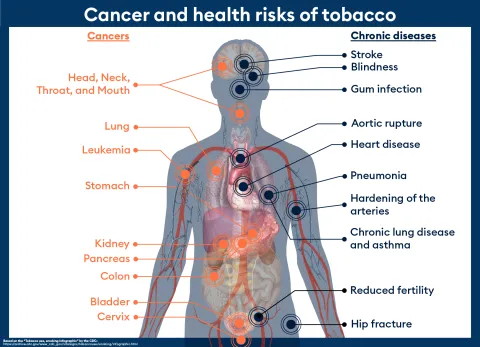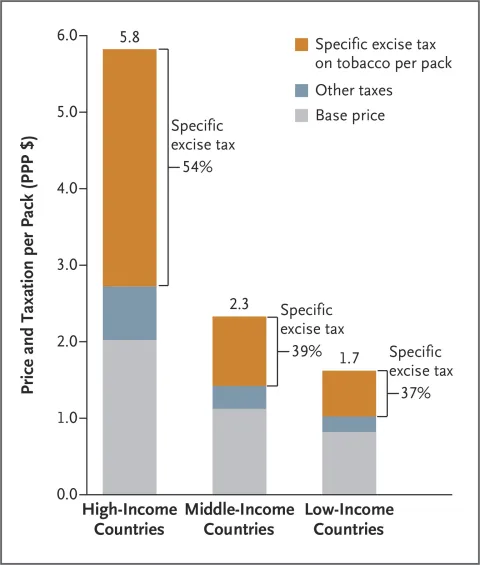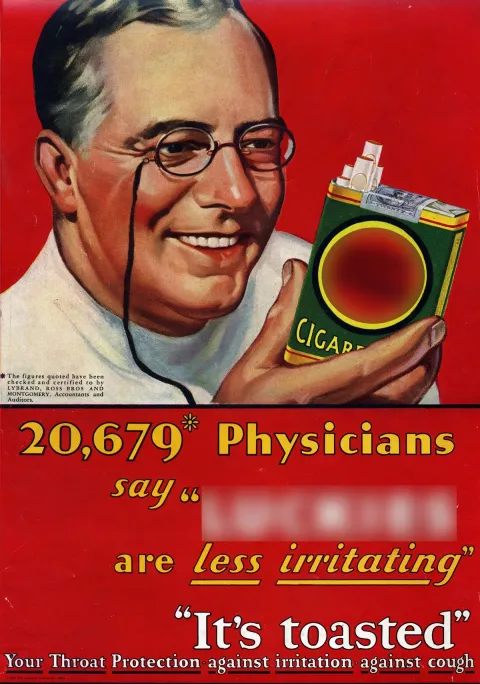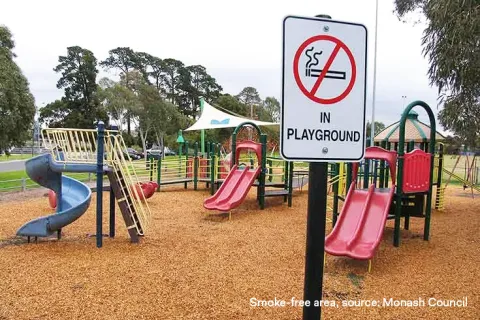Tobacco control
Tobacco use is linked to at least 20 cancer types. It is the leading preventable cause of cancer, accounting for some 2.5 million deaths due to cancer globally, and costs an estimated USD 1.4 trillion to economies. New products, such as e-cigarettes, are designed to capture a new generation of consumers.
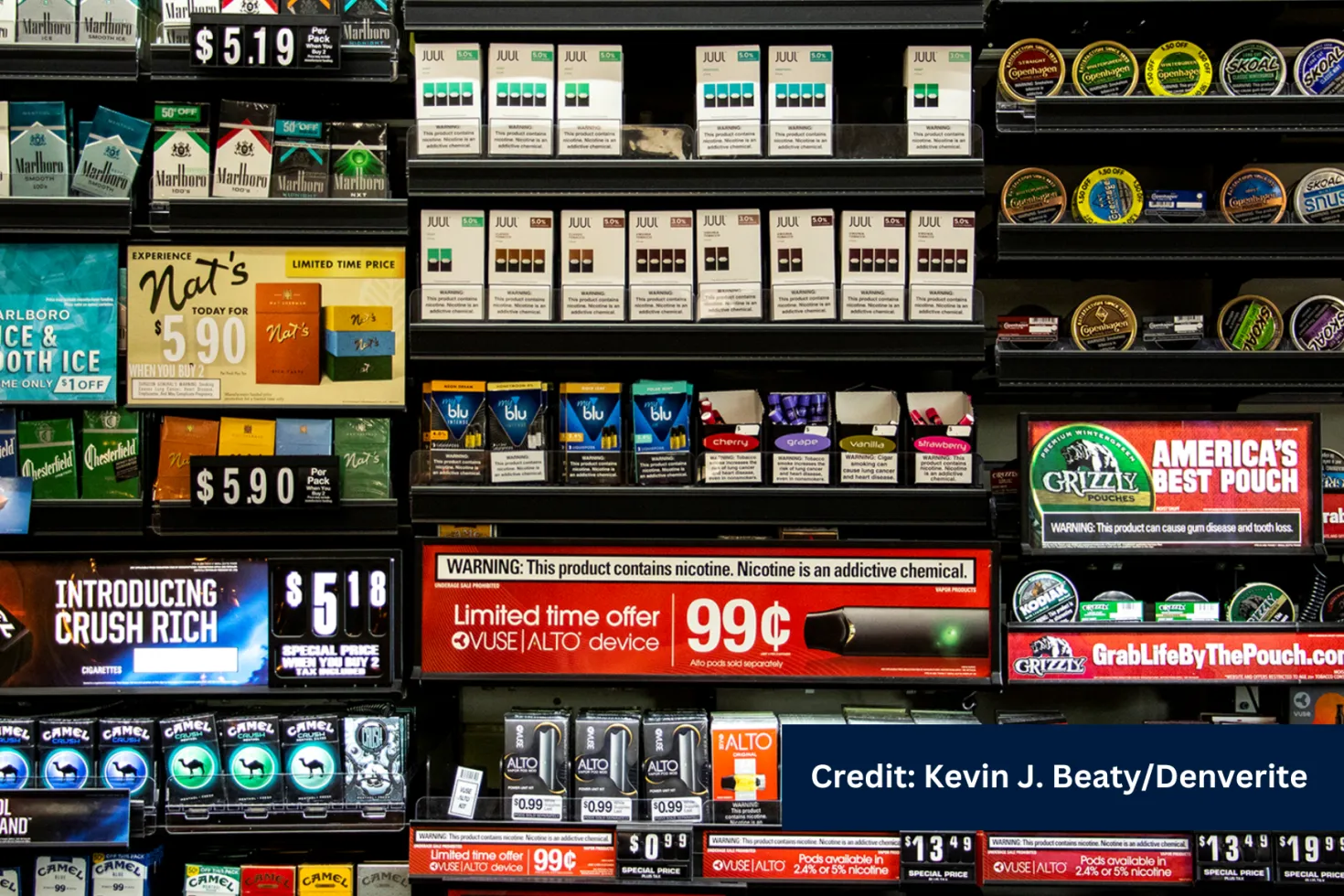
Tobacco kills eight million people worldwide each year, mainly in low- and middle-income countries where 80% of the world’s smokers live. Second-hand smoking further causes 1.2 million deaths per year among non-smokers.
Tobacco use is a leading cause of multiple cancers such as oral cancers, lung, liver, stomach, bowel and ovarian cancers, as well as some types of leukaemia. It contributes to 25% of all cancer deaths globally, an estimated 2.5 million per year.
Quitting at any age can make an immense difference for the user, increasing life expectancy and improving the quality of life.
Tobacco use burdens the global economy, with an estimated USD 1.4 trillion in healthcare costs and lost productivity each year. Tobacco also impedes the achievement of Sustainable Development Goals and has a negative impact on economies, women’s health, the environment, and climate change. Its production is also linked to human rights abuses and child labour.
Image: Diagram based on the “Tobacco use, smoking infographic” by the CDC – click on image to view larger.
What is tobacco control?
Tobacco control aims at reducing the use of tobacco and the serious health risks and mortality it causes through policies, laws and education. It has long been a priority of UICC’s advocacy efforts in collaboration with members and partners. Tobacco control is also one of the 16 essential health services monitored by the World Health Organization (WHO) to achieve universal health coverage (UHC).
It is essential for the promotion of better health as part of UHC that people understand the risk of smoking and tobacco use. Governments and policy makers have a clear responsibility to protect them from harm caused by tobacco.
– Sonali Johnson, Head of Knowledge, Advocacy and Policy, Union for International Cancer Control (UICC)
World No Tobacco Day
World No Tobacco Day takes place every 31 May to raise awareness about the health risks associated with tobacco use and advocate for effective policies to reduce tobacco consumption worldwide.
Regulations and policies
In order to stop the global tobacco epidemic, an international treaty entered into force in 2005: the Framework Convention on Tobacco Control (WHO FCTC). WHO defines it as “an evidence-based treaty that reaffirms the right of all people to the highest standard of health. There are currently 180 parties to the convention. The treaty deals with topics such as demand-side reduction measures, supply-side reduction measures, protection of the environment, protection from tobacco industry interests, implementation of multi-sectoral tobacco control strategies, nicotine addiction and exposure to second-hand smoke, public awareness, illicit trade and measures such as tax increases or ban advertising.
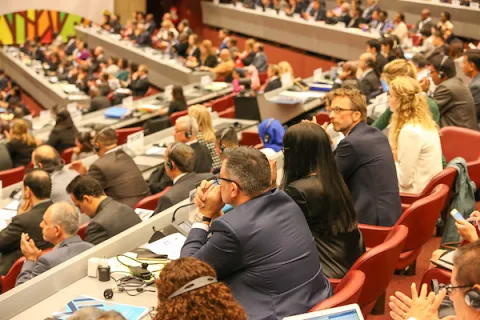
Photo credit: WHO FCTC/P.Virot
The role of UICC and its members
UICC and its members encourage governments and policy makers to adopt and effectively implement the WHO FCTC treaty and by raising awareness of the risks related to the use of tobacco.
The tobacco industry continues to promote tobacco use with very strong and powerful marketing campaigns targeted particularly at youth populations. It is therefore very important to counter the dissemination of misinformation and to raise awareness about this complex topic encompassing several health and socio-economic domains. This includes education about e-cigarettes and emerging heated tobacco products.
UICC is concerned by the rise in the prevalence of youth vaping and calls for strict regulation of the ingredients, age limits and other aspects related to the sales and distribution of e-cigarettes. There is a growing body of research that shows that they are unhealthy products designed to be addictive and facilitate first-time tobacco smoking.
UICC podcast on tobacco control

The Tobacco Control room is a dedicated space for professionals, researchers, activists, and advocates who are passionate about combating tobacco products use and its harmful effects.
UICC focuses its efforts on three key areas:
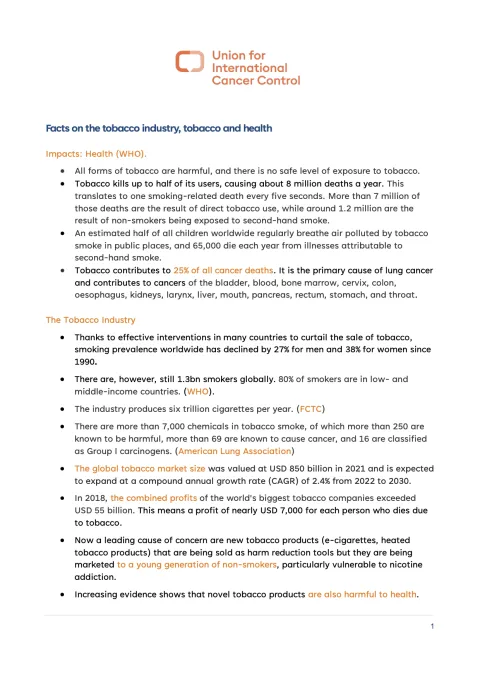

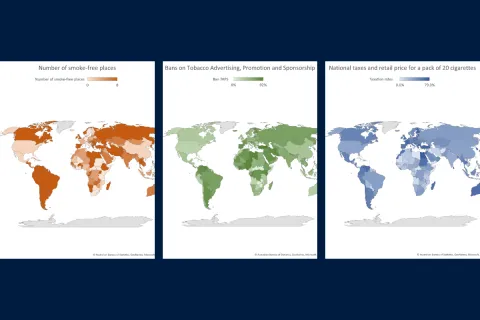


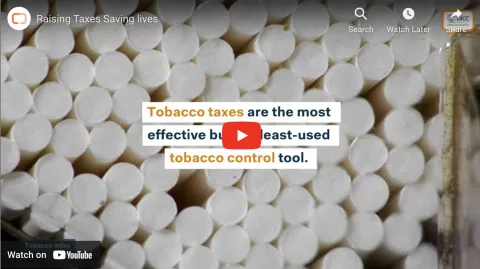
What is tobacco control? Tobacco control aims to reduce the use and demand of tobacco and the serious health risks and mortality it causes through policies, laws, and education. It has long been a priority of UICC’s advocacy efforts in collaboration with members and partners.
Why is tobacco control important? Tobacco use is a leading cause of many types of cancer, accounting for some 2.5 million deaths due to cancer globally each year. It also burdens the global economy with an estimated USD 1.4 trillion in healthcare costs and lost productivity annually.
What are the health risks associated with tobacco use? Tobacco use is a leading cause of multiple cancers such as lung, mouth, throat cancers, stomach, and colorectal cancers, as well as some types of leukaemia. It also increases significantly the risk of developing many other cancers, including bladder, breast, cervical, kidney, ovarian, and pancreatic cancers.
It contributes to 25% of all cancer deaths globally. Additionally, tobacco kills up to half of its users, causing about 8 million deaths a year. More than 7 million of those deaths are the result of direct tobacco use, while around 1.2 million are the result of non-smokers being exposed to second-hand smoke.
How does second-hand smoke affect non-smokers? Second-hand smoking causes 1.2 million deaths per year among non-smokers. An estimated half of all children worldwide regularly breathe air polluted by tobacco smoke in public places, and 65,000 die each year from illnesses attributable to second-hand smoke.
What are the economic impacts of tobacco use? Tobacco use burdens the global economy with an estimated USD 1.4 trillion in healthcare costs and lost productivity each year. Additionally, tobacco production is linked to human rights abuses and child labour. The global tobacco market size was valued at USD 850 billion in 2021 and is expected to expand at a compound annual growth rate (CAGR) of 2.4% from 2022 to 2030.
The tobacco industry is therefore making massive profits at the expense of public health, while at the same time largely avoiding taxation.
What measures are effective in controlling tobacco use? Governments can take effective measures to curb tobacco use, including taxation, advertising bans, public smoking bans, and educational campaigns. Increasing tobacco prices by 10% can cut consumption by 4-5%. The WHO Framework Convention on Tobacco Control (WHO FCTC) and the MPOWER measures are proven strategies in reducing tobacco use globally and the influence of the tobacco industry – known as the commercial determinants of health – to protect public health.
What are these commercial determinants of health? Isn’t it up to the individual to make the decision to quit? Commercial determinants of health, such as the marketing and lobbying tactics of the tobacco industry, significantly undermine cancer prevention and control efforts. The tobacco industry often uses its economic power to influence public policies, delaying or weakening regulations on tobacco products, advertising, and health warnings. This interference can hinder progress in reducing tobacco-related cancer rates, as it prevents the implementation of effective public health measures that prioritise the well-being of populations over industry profits.
Placing the responsibility solely on individuals therefore overlooks the broader influence of these factors in preventing people from quitting – or that makes it more likely that they start in the first place. The industry has sought for decades to consistently shape an environment that makes smoking more accessible and appealing, particularly to populations more susceptible to tobacco use due to income level, health awareness and education, and access to healthcare. These groups often face additional barriers, including targeted advertising and limited access to support services, which further undermine individual efforts to quit smoking.
What about new tobacco products such as e-cigarettes? New tobacco products include e-cigarettes, heated tobacco products (HTPs), and oral nicotine pouches. These products are often marketed as safer alternatives to traditional cigarettes, but they still pose significant health risks and can lead to nicotine addiction. Flavours and attractive packaging are commonly used to appeal to young people.
Are these new tobacco products effective cessation/harm reduction tools or do they act as a gateway to smoking? There is evidence that vaping can lead to nicotine addiction and increase the likelihood of transitioning to smoking, especially among young people. A study by UC San Diego showed that people aged 12 to 24 who used e-cigarettes were three times as likely to become daily cigarette smokers in the future
There is also a growing body of evidence suggesting that e-cigarettes expose consumers to significant health harms, and that the tobacco industry is using them to capture a new generation of consumers, and create an image as an industry concerned by public health and wanting to reduce the harms created by decades of tobacco use.
What are the dangers of e-cigarettes? E-cigarettes, also known as vapes, pose several health risks despite being marketed as safer alternatives to traditional cigarettes. These include:
-
Health risks: E-cigarettes can contain harmful substances and higher concentrations of nicotine, leading to addiction and potential lung damage.
-
Lung damage: Vaping can cause significant lung damage, similar to the effects of smoking.
-
Addiction: Nicotine in e-cigarettes is highly addictive, increasing the risk of dependency and transitioning to traditional smoking.
-
Youth targeting: The tobacco industry often targets young people with attractive marketing, flavours, and packaging, making e-cigarettes appealing to a younger audience.
-
Second-hand exposure: E-cigarettes produce an aerosol that contains harmful substances, posing health risks to non-users, particularly in indoor environments.
How can individuals help in tobacco control efforts? Individuals can help by supporting tobacco control policies, spreading awareness about the dangers of tobacco use, and encouraging others to quit smoking. Participating in global campaigns such as World No Tobacco Day as well as community initiatives, and advocating for smoke-free environments, are also effective ways to contribute.
What is World No Tobacco Day? World No Tobacco Day is an annual global campaign by the World Health Organization (WHO) to raise awareness of the dangers of tobacco use and promote tobacco control. It is celebrated every year on 31 May.
How can individuals participate in World No Tobacco Day? Individuals can participate by spreading awareness about the dangers of tobacco use, supporting tobacco control policies, and joining local events and campaigns. Sharing information on social media and engaging in community activities are also effective ways to contribute.
What are the goals of World No Tobacco Day? The goals of World No Tobacco Day include raising awareness about the harmful effects of tobacco use, advocating for policy changes to reduce tobacco consumption, and supporting efforts to protect future generations from the dangers of tobacco.
What is the theme for World No Tobacco Day 2025? The theme for World No Tobacco Day 2025 is ‘Unmasking the Appeal’. This theme highlights the deceptive tactics used by the tobacco industry to promote smoking, particularly among vulnerable populations. The industry often masks the harms of tobacco use by advertising its products as glamorous, sophisticated, or socially desirable, despite the well-documented risks of cancer and other serious diseases. By "unmasking" these manipulative strategies, World No Tobacco Day 2025 aims to raise awareness of how tobacco companies distort the truth to maintain their profits, while urging individuals and policymakers to confront these tactics and implement stronger measures to protect public health. This day serves as a reminder of the need for comprehensive tobacco control policies that challenge the industry's influence and prioritise the health of communities worldwide.
Latest UICC news and blog articles on tobacco control
Global tobacco control frameworks, local action, and civil society recognition by WHO

Kenya and Uganda step up efforts to raise tobacco taxes and curb industry interference
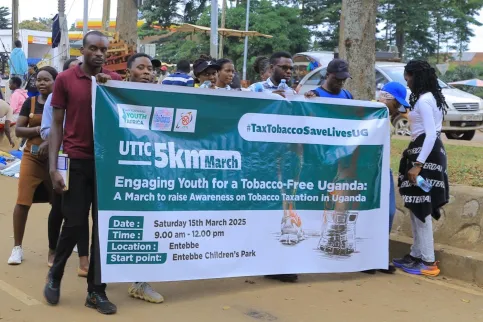
UICC to advance lung cancer resolution at the World Health Assembly

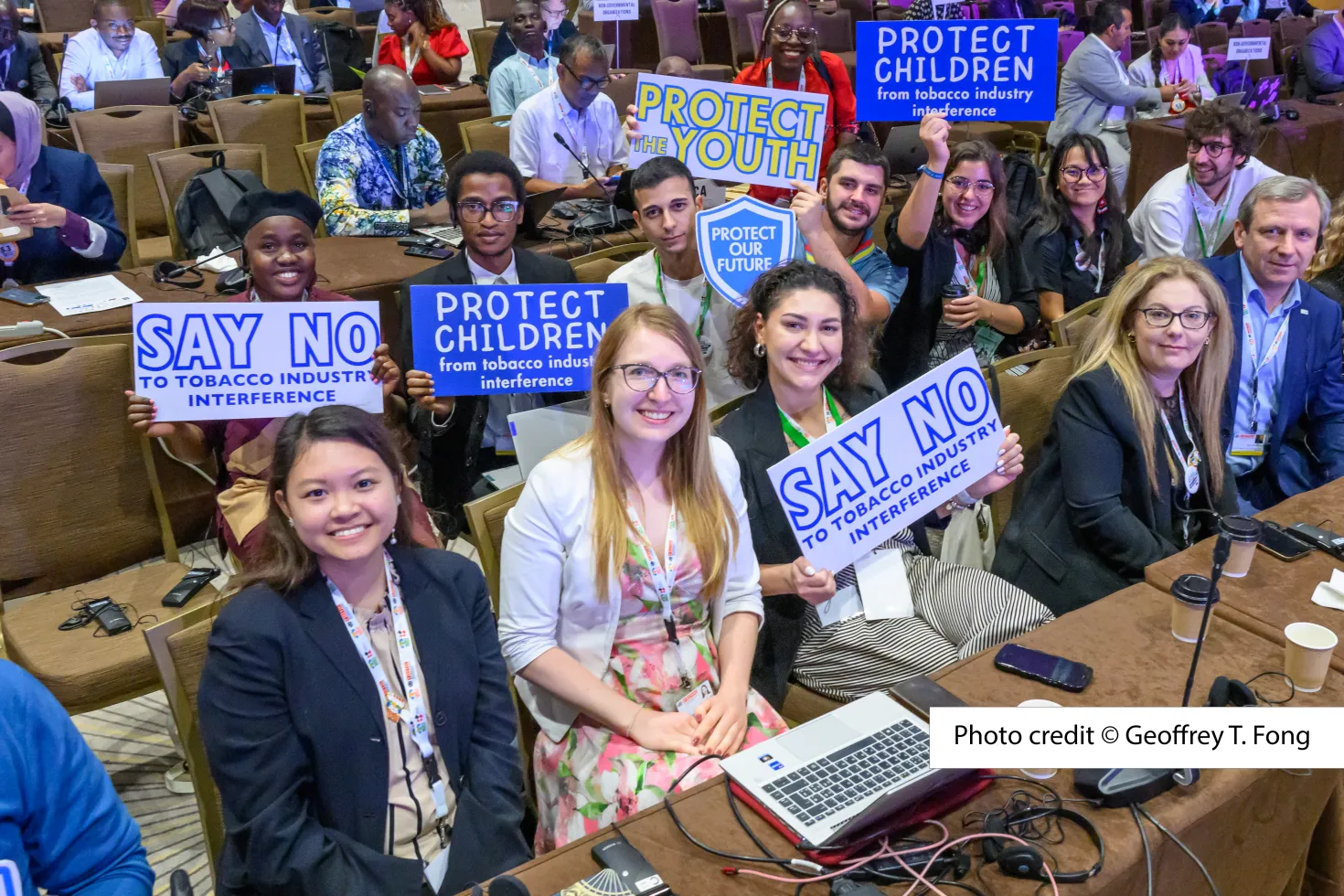
World No Tobacco Day is an annual awareness day taking place on 31 May.
Last update
Monday 26 May 2025